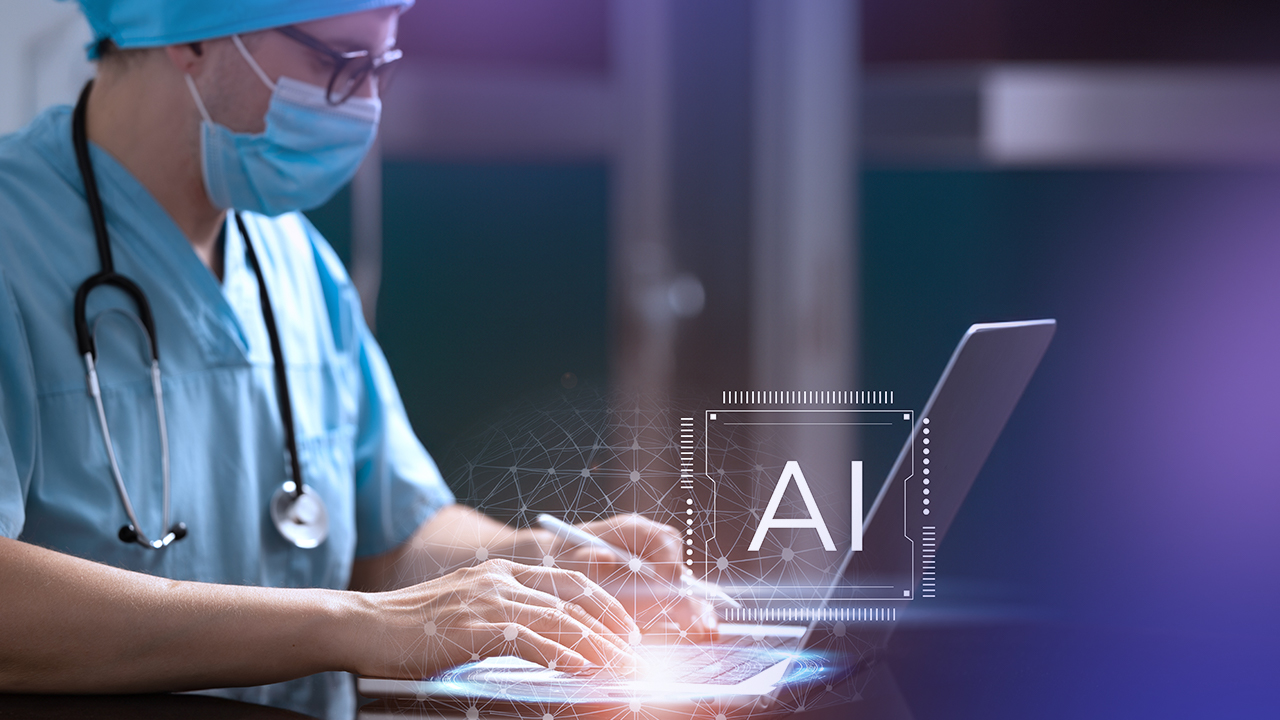Headless ecommerce solutions is an ecommerce platform that enables businesses to create stores for various channels like voice assistants, smartphones, and other digital devices.
- It separates the front end from the back end and uses APIs to connect different systems, allowing flexibility to integrate CRM, customer service, payment gateways, and more.
- With headless commerce, businesses can build a customized commerce platform that suits their specific needs.
Let’s take a deep dive into headless commerce solutions, which empower businesses to create flexible, customized digital stores.
ON THIS PAGE
Headless Commerce vs. Traditional Commerce
Headless commerce and traditional commerce have distinct approaches in the ecommerce industry. Traditional commerce, also known as monolithic or all-in-one systems, dominated the market for many years. However, now it is giving way to the new headless approach. To comprehend the differences between the two, let’s begin with a simple explanation of each:
- In traditional commerce, a monolithic system encompasses all the necessary components, including business logic, UI layer, content management, etc., within a single tightly coupled codebase, making it an “all-in-one” system.
- On the other hand, headless commerce involves separating units responsible for specific services: the frontend for displaying the UI layer, the backend for business logic, the CMS for content management, and other third-party tools like loyalty programs, search engines, payments, analytics, or CRMs. These units communicate with each other through APIs.
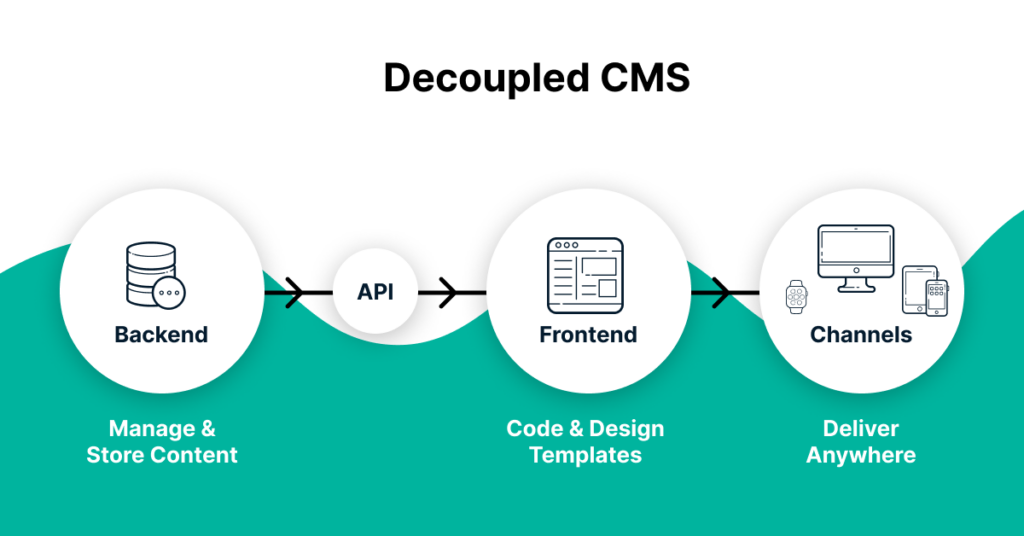
10 Best Headless Ecommerce Platforms
Considering the above factors, you can confidently select a headless commerce platform that empowers your business with the flexibility, scalability, and personalized experiences necessary to thrive in the competitive ecommerce landscape.
- Shopify Plus
- BigCommerce
- Adobe Commerce
- Salesfroce Commerce Cloud
- Commercetools
- Experro
- SAP CX Commerce Cloud
- OroCommerce
- Kontent.ai
- FoxyCart
Now, let’s look at some of the best Headless Ecommerce platforms.
1. Shopify Plus
- Shopify is a cloud-based commerce platform for small and medium-sized businesses.
- It is designed for high-growth enterprise customers and supports headless commerce.
- Shopify Plus enables businesses to use any device as a sales channel and offers extensive integrations.
- Developers have the freedom to choose front-end frameworks and integrate third-party tools.
- The pricing for Shopify Plus is suitable for established enterprise businesses but may be expensive for growing brands when compared to Shopify.
Customization: Shopify offers customization options through its app store, themes, and API.
Pricing: Shopify Plus’s starting cost is $1.8K per month.
User Base: 6,455,887 websites are using Shopify.
2. BigCommerce
- BigCommerce is a flexible SaaS-based ecommerce platform that allows merchants to build and grow online stores easily.
- It offers enterprise-grade functionality and customization options, making it an excellent choice for businesses of all sizes.
- The platform is headless-ready, providing the flexibility to create content-rich experiences using any front end.
- Additionally, BigCommerce supports flexible APIs and offers a multi-storefront option, enabling companies to expand their business into multiple regions or launch multiple brands.
- While BigCommerce comes with a comprehensive set of features for ecommerce, it may sometimes pose challenges when integrating with necessary external tools.
Customization: BigCommerce provides various apps to customize your store as per your preferences.
Pricing: BigCommerce offers a one-month free trial, and their paid plans begin at $29.95 per month.
User Base: 145,027 websites are using BigCommerce.
Recommended Read: BigCommerce Store Development
3. Adobe Commerce
- Adobe Commerce, also known as Magento, is part of the Adobe suite of products.
- It enables businesses to build multi-channel commerce experiences, making it suitable for various industries and business models.
- With native integrations with other parts of the Adobe Suite, including Analytics, Experience Manager, and Creative Cloud, Adobe Commerce provides a solid foundation for creating personalized shopping experiences.
- The platform is fully scalable and extensible, allowing businesses to incorporate new technologies into their ecommerce stores, even if these technologies are new.
- However, one significant drawback of the platform is the high total cost of ownership that comes with using a suite-based ecommerce system.
Customization: Absolutely, Adobe Commerce posses exceptional customizability thanks to its open-source architecture and modular design.
Pricing: Adobe Commerce Open Source is freely available as an open-source solution. Conversely, Magento Commerce is the paid version, commencing at $2,000 per month.
User Base: Overall 713,931 websites use Adobe Commerce.
Read Also: Magento Website Development
4. Salesforce Commerce Cloud
- Salesforce Commerce Cloud is a part of the Salesforce suite of products, offering an agile commerce platform on top of Salesforce CRM.
- This integration allows seamless connectivity with other products within the suite, making it effortless to leverage the power of the entire Salesforce ecosystem.
- With Salesforce Commerce, ecommerce stores can embrace API-first commerce to enhance the shopping experience for customers.
- Moreover, stores can leverage Salesforce’s library of pre-built integrations to enhance their websites and develop mobile applications.
- While Salesforce Commerce Cloud is excellent for connecting with a powerful suite, it may lead to challenges when integrating tools outside the Salesforce ecosystem and maintaining a lightweight tech stack to remain flexible and adaptable.
Customization: The user can access to set up, create fields and objects, modify picklist values, and define validation rules, among other functions.
Pricing: Salesforce Commerce Cloud requires an annual license fee of approximately $150,000/year.
User Base: Over 8,670 companies are using Salesforce Commerce Clouds.
5. Commercetools
- Commercetools combines headless commerce technology with an omnichannel platform, providing cloud-based point-of-sale functions for B2B and B2C companies.
- The service enables eCommerce experiences across various touchpoints, including mobile apps, websites, VR applications, and voice assistants, using an API-driven approach that decouples the front and back ends for custom solutions.
- No SQL or other customizations are needed as the comprehensive APIs cover everything, and the platform offers a range of inventory management features, including tracking, adjustments, multi-store management, and returns.
- Commercetools seamlessly integrates with CyberSource for payment management, Contentstack for content management, and Frontstatic for front-end development.
- Additionally, it can integrate with front-end CMS systems like Adobe Experience Cloud.
Customization: CommerceTools offers a high level of customization through its API-first approach and modular architecture.
Pricing: CommerceTools pricing begins at $500 per month and scales based on the volume of API requests generated by your store.
User Base: Over 249 websites use Commercetools.
6. Experro
- Experro is a unified Digital Experience Platform designed to integrate content, commerce, and advanced search into one seamless solution.
- Experro gives businesses the freedom to innovate with a headless, composable platform that seamlessly integrates content, commerce, and advanced data, all while maintaining scalability and flexibility.
- Its features include a Customer Data Platform (CDP), AI-powered merchandising, intent-driven search, a drag-and-drop website builder, and headless architecture, and much more to make your e-store
- Experro integrates seamlessly with major platforms like Shopify, Magento, and BigCommerce, enabling businesses to provide consistent, high-quality experiences across all channels.
- An all-in-one solution that connects all parts of the eCommerce journey—from content management to advanced search—creating a seamless ecosystem that boosts engagement and profitability.
Customization: Experro, an open-source react based frontend platform follows MACH architecture making it API friendly allowing complete customization on design, features dev, and integration.
Pricing: Experro offers all the required components within a single platform with initial costs starting at a competitive price. With its fully managed platform, operated independently by your marketing teams, there’s no need for maintenance or continuous dev efforts, resulting in even more savings.
User Base: Experro is rapidly gaining traction among businesses seeking cutting-edge digital experience solutions tailored for modern eCommerce and content management.
7. SAP CX Commerce Cloud
- SAP Commerce Cloud is a leading solution empowering businesses to manage communication, sales, and customer support across all platforms.
- The platform centralizes product data in a media-neutral format for efficient control and preparation.
- Businesses can create and manage online stores across multiple channels, delivering personalized experiences based on customer browsing and purchase history, preferences, and behavior.
- Seamless integration with SAP and third-party systems allows real-time insights and analytics on sales, customer behavior, and engagement, facilitating data-driven decision-making.
Customization: SAP Commerce Cloud allows users to easily extend and customize their websites according to their needs with the API-first approach.
Pricing: The cost is $100k per year per license.
User Base: 21,190 websites are using the platform.
8. OroCommerce
- OroCommerce, founded by the same team behind Magento, specializes in B2B solutions but is highly customizable to suit various B2B, B2B2C, B2B2B, and B2C ecommerce needs, operating on an open source philosophy with a vibrant community for support.
- Ideal for wholesalers, OroCommerce offers robust B2B features, including advanced pricing, catalog management, flexible workflows, and support for complex order fulfillment processes, enabling efficient operations and catering to B2B customers’ specific needs.
- The platform boasts inventory management capabilities for multi-website and multi-warehouse management, along with options for personalized catalogs and pricing adjustments.
- OroCommerce supports both headless and traditional ecommerce, allowing brands to extend their presence to web and mobile platforms.
- The platform seamlessly integrates with CRM apps like Salesforce and ERP apps like SAP.
Customization: The platform allows for the creation of fully customized eCommerce websites.
Pricing: Starting at $45,000.00 per year.
User Base: Overall 558 websites.are using OroCommerce.
9. Kontent.ai
- Kontent.ai is a versatile Headless CMS specifically tailored to the needs of ecommerce businesses. It offers a flexible content management system that seamlessly integrates with various front-end technologies.
- The platform emphasizes ecommerce functionality, enabling businesses to effectively manage and deliver product content, promotions, and personalized experiences across different channels.
- One of Kontent.ai’s notable features is its visually intuitive content modeling interface. This interface allows content editors and administrators to easily define and structure content types and relationships, eliminating the need for extensive technical knowledge or coding expertise.
- Its main capabilities are Content Variants and Variations, which enable businesses to efficiently manage and customize content for diverse target audiences, languages, regions, or other specific attributes.
- This functionality facilitates streamlined content localization, A/B testing, and personalization efforts, enabling businesses to offer highly tailored and localized experiences to their customers from a unified content repository.
Customization: The platform’s focus on flexibility and scalability makes it ideal for organizations looking for a customizable content management solution.
Pricing: Starting at $1,249 per month.
Userbase: More than 173+ customers are currently using Kontent.ai.
10. FoxyCart
- FoxyCart is an ecommerce platform that offers complete customization, catering to web designers and developers looking to create robust and user-friendly online shopping carts.
- It satisfies the needs of both experienced developers and beginners with a basic understanding of HTML.
- Known for its versatility, FoxyCart accommodates various business models, earning recognition as one of the top headless ecommerce platforms.
- Unlike all-in-one systems, FoxyCart focuses on providing retailers with the fastest checkout flow possible, ensuring a simple and efficient buying experience.
- The company underwent a name change a few years ago, rebranding from FoxyCart to Foxy.io. While placing a stronger emphasis on its API and its integration capabilities, its core functionality remains unchanged.
Customization: With headless APIs available, FoxyCart offers extensive customization options, making it highly adaptable to varying needs.
Pricing: Starting at $21.25 per month.
Userbase: Overall 8,982 websites are currently using FoxyCart.
Recommended Read: Top 8 B2B Ecommerce Platforms
Brand Using Headless Commerce
Nike
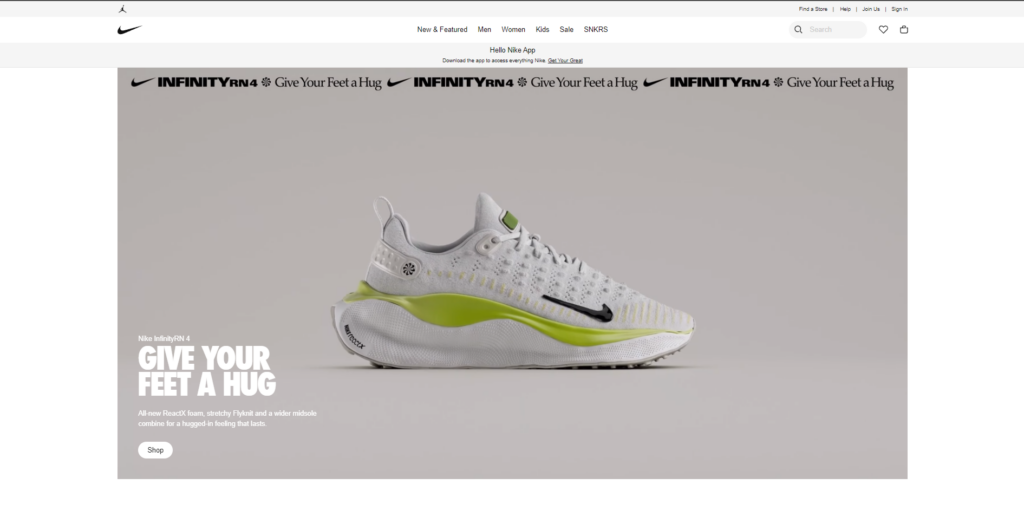
- The benefit of Headless Commerce: Nike achieved a mobile-first ecommerce website optimized for their mobile-dominant consumer segment by implementing React SPA combined with Node.js backend for front-end (BFF) to enhance experiences across all pages.
- Results: Nike captured more market share than Adidas, becoming a market leader.
Burrow
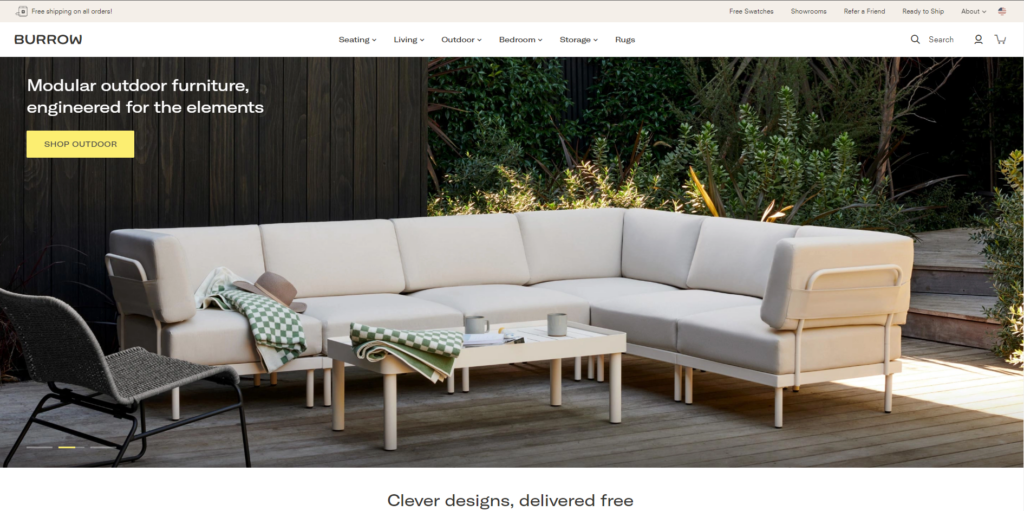
- The benefit of Headless Commerce: Burrow attained a template-free site, enabling unlimited creativity and customized experiences for customers while reducing developer intervention and focusing more on marketing efforts.
- Results: Burrow’s site conversion rate increased by 30% within two months, accompanied by a 50% boost in site speed and performance.
Koala
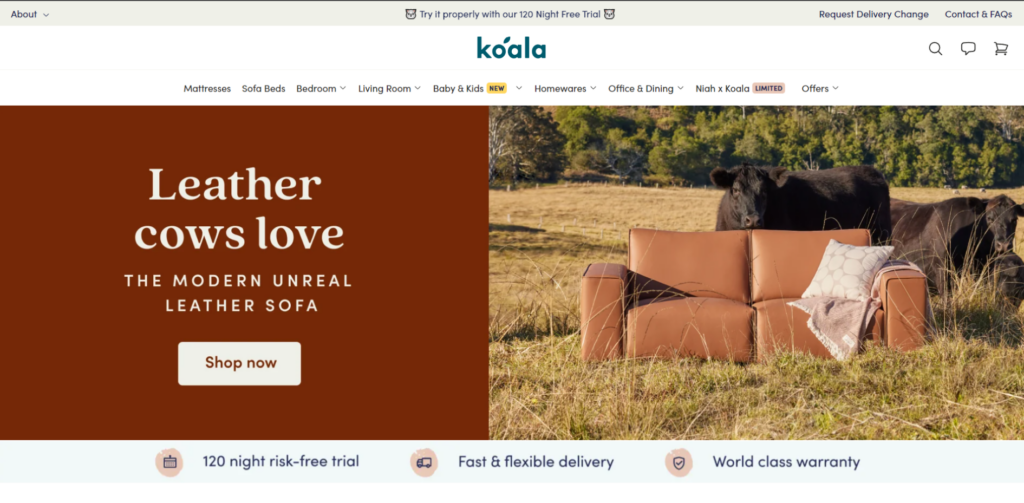
- The benefit of Headless Commerce: Koala leveraged a powerful backend platform to support business expansion and simultaneously work on frontend and backend, offering tailored experiences and microservices to customers.
- Results: Koala made rapid changes to the website without downtime, improved site response time, and delivered tailored experiences for desktop, mobile, and other devices, enhancing customer satisfaction.
Venus

- The benefit of Headless Commerce: Venus, a prominent women’s apparel retailer, addressed slow loading times, with over 80% of site pages taking more than one second to load, by adopting Headless Commerce. They transformed their storefront into a React Progressive Web App and restructured their infrastructure into a backend for the frontend (BFF) approach.
- Results: This change resulted in a remarkable improvement in site speed, with over 70% of site pages loading under a second, representing a staggering increment of over 50%. Consequently, Venus experienced a 24% increase in conversion rate and significantly improved customer retention.
Seedlip

- The benefit of Headless Commerce: As the world’s first distilled non-alcoholic spirit brand, Seedlip values innovation in both its products and website. Early adoption of headless ecommerce allowed them to offer a more sophisticated storefront experience to their target audience.
- Results: With headless implementation, Seedlip achieved a sophisticated website design, featuring attractive transitions like an animated bumblebee on the homepage and subtle moving foliage in the background, providing customers with an unforgettable user experience.
Essential factors to consider while choosing Headless Commerce Platforms
When searching for a headless commerce platform, there are several key factors to consider to ensure you make the right choice for your business:
User Interface: Look for a clean and user-friendly interface for back-end management and front-facing customer interactions. Avoid platforms with steep learning curves that might lead to conflicts for you and your shoppers.
Integrations: Check if the platform easily connects with other essential tools, such as CRM and PIM systems, to centralize customer and product data. Ensure it supports integrations that align with your business needs.
Learning Resources: Evaluate the availability and accessibility of learning resources like tutorials, how-to videos, and API documentation. A supportive community forum where users offer assistance can be a valuable resource.
Customization: Verify the customization level of the platform allows for both front and back ends. Ensure you can integrate existing tools integral to your business and assess if the platform offers the necessary integrations for future needs.
Customer Support: Ensure the parent company provides reliable and responsive customer support, including 24/7 availability through live chat, phone, and email. Fast issue resolution is vital to prevent potential losses from downtime.
Personalization Goal: Have a clear vision of your store’s personalization requirements and goals. Remember this while evaluating different headless commerce platforms to ensure the chosen one aligns with your personalization strategy.
Advantages of Headless Ecommerce Solutions
- Provides good acceleration and faster websites with better page speed, reducing bounce rates and improving SEO metrics.
- It has a simpler development process and flexibility, allowing development teams to choose the best backend and front-end solutions.
- Scalability and performance, future-proofing the platform and enabling quick adaptation to new touchpoints and technologies.
- Easy testing of new technologies, providing the freedom to experiment and make changes without disrupting backend processes.
- Gives full control of platform architecture, allowing for ownership and control over content delivery and management.
- Marketing efficiency, empowering marketers to execute various promotional tactics to boost online sales.
- Offers rapid time-to-market for multinational rollouts, facilitating seamless expansion into global markets with support for multiple currencies and languages.
- It enhances customer acquisition metrics, resulting in reduced customer acquisition costs and increased conversion rates.
- The platform ensures an omnichannel and multitouch experience, serving the preferences of modern consumers who utilize multiple touchpoints throughout their buying journey.
Challenges of the Headless Approach for Your Company
- Alignment and Coordination Among Team Members: Keeping a large team on the same page can be challenging with quick changes and different perspectives from developers, marketers, and product owners due to the flexibility of headless ecommerce.
- Lack of Real-time Previews: Headless ecommerce may lack real-time previews, making it challenging to have a WYSIWYG (what you see is what you get) experience, leading to time-consuming content structuring.
- Security Across Multiple Layers: Ensuring security for ecommerce APIs and the front layer can be complex and requires careful consideration to protect against potential risks.
- Balancing Limitless Scalability: While headless ecommerce offers limitless scalability, achieving the ideal scaling journey requires standardizing processes, maintaining content quality, and managing workflows to align with various corporate entities.
- Employee Onboarding Pace: Employees accustomed to traditional approaches may require time to adapt and retrain themselves to work efficiently with headless ecommerce.
How Headless Commerce Shaping the Future of Ecommerce
In the ever-evolving ecommerce world, where customer needs and expectations continue to change rapidly, headless commerce stands as the best option for businesses seeking a modern, scalable, and future-proof solution.
Whether you are a traditional ecommerce platform looking to upgrade or a new entrant in the market, considering a headless commerce approach will undoubtedly position your business for success and drive business value in the long run.
As more retailers discover the benefits and possibilities of headless commerce, it is clear that this innovative software architecture is shaping the future of ecommerce, revolutionizing the way businesses interact with their customers and paving the way for exceptional customer experiences in the digital age.
Summary:
- Headless commerce solutions have emerged as a game-changer offering businesses unparalleled flexibility, customization, and improved customer experiences.
- With their decoupled architecture and robust APIs, headless platforms empower retailers to deliver unique customer experiences across different channels, including mobile devices and social media.
- The benefits of headless commerce, such as faster development cycles, increased scalability, and seamless integration with back-end systems, have attracted industry leaders, large enterprises, and small businesses alike.
- Embracing a headless commerce platform opens up a world of possibilities for retailers to meet and exceed customer expectations.
- By empowering marketing teams and front-end developers with the simplicity and agility of headless solutions, businesses can create stunning storefront experiences that cater to the diverse needs of their customers.
- Moreover, headless commerce architectures allow easy integration with other critical tools, such as headless CMS, order management systems, and enterprise resource planning (ERP) software, ensuring a smooth and streamlined eCommerce operation.
FAQs
How much does headless ecommerce cost?
The cost of headless ecommerce development varies depending on factors like platform, requirements, and the number of front ends. To get an accurate quotation, it is advisable to consult with an experienced ecommerce company.
What is headless ecommerce architecture?
- Headless commerce architecture is a modern software development concept that separates the front-end and back-end layers of a system.
- It involves various solutions, such as Frontend as a Service, headless commerce platforms, headless CMS, and payment solutions.
- This approach allows businesses to create a customized and flexible ecommerce stack, tailored to their specific needs, by freely adding or altering services.
- Headless commerce architecture provides agility and adaptability, enabling businesses to meet evolving customer expectations and optimize web performance and mobile experiences independently.
- It empowers ecommerce businesses to excel in a highly competitive market.
How does headless ecommerce influence customer experience?
Customer experience is a critical aspect of headless commerce solutions. With a headless approach, businesses can create highly customized and immersive user interfaces, providing exceptional customer experiences across various touchpoints, including mobile devices and social media.
How do application programming interfaces (APIs) contribute to headless commerce?
APIs play a fundamental role in headless commerce architecture. They enable seamless communication between different components, such as the front end and back end, and facilitate integration with third-party tools like payment gateways, CRM systems, and analytics platforms, enhancing the overall flexibility and functionality of the ecommerce platform.
What sets headless architecture apart from traditional ecommerce platforms?
Headless architecture decouples the presentation layer (user interface) from the backend, allowing businesses to have greater control and flexibility in delivering content and experiences to customers.
On the other hand, Traditional ecommerce platforms often have a monolithic structure, making it challenging to adapt to changing customer needs and emerging technologies.
How does headless commerce benefit ecommerce businesses?
Headless commerce offers several advantages for ecommerce businesses, including faster development cycles, enhanced scalability, improved security, and the ability to provide a consistent user experience across different channels.
It also enables businesses to quickly adapt to market trends and customer demands, fostering innovation and growth.
Is headless commerce suitable for small businesses and startups?
Yes, headless commerce is suitable for businesses of all sizes, including small businesses and startups. Its modular and scalable nature allows smaller companies to start with essential features and gradually add functionalities as their business grows, providing a cost-effective and future-proof solution.
What is the presentation layer in headless ecommerce solutions?
The presentation layer, or frontend layer, plays a crucial role in headless commerce. It is responsible for delivering content and user experiences to customers. With headless architecture, businesses can create captivating and interactive frontend templates, offering a seamless and engaging shopping experience to their customers.
How does headless commerce accommodate different business needs?
Headless commerce solutions can be tailored to meet specific business needs and requirements. Its flexibility allows businesses to integrate various backend systems, select the most suitable content management system, and leverage open-source ecommerce platforms, all while providing the best solution to achieve their unique objectives.
What are headless commerce platforms?
A headless ecommerce platform is an online store that separates the customer-facing front-end and technical back-end, allowing independent updates to each element without affecting the other.
What advantages does a headless content management system (CMS) offer?
A headless CMS provides content creators and marketers with a simplified interface to manage content across multiple channels and touchpoints. It allows them to focus on creating engaging content without worrying about the technical aspects of front-end development, enabling faster content updates and delivery.
What is the headless ecommerce solution and how is it transforming the world of ecommerce?
The Headless Ecommerce Solution is revolutionizing the ecommerce landscape. Unlike traditional commerce platforms, this approach decouples the front end and back end, enabling businesses to create a seamless and personalized shopping experience. With simplicity, flexibility, and scalability at its core, this modern architecture captivates business owners. Leveraging Progressive Web Apps (PWA), they can build a single platform catering to various devices and channels. The difference is evident, offering tailored experiences through front-end templates without the constraints of a traditional approach. Embrace the headless revolution to unleash the full potential of your customer-facing side.
Can headless commerce solutions integrate with existing IT systems?
Yes, headless commerce solutions are designed to be flexible and integrate seamlessly with existing IT systems, such as enterprise resource planning (ERP) software, backend systems, and customer relationship management (CRM) tools. This integration ensures a smooth and efficient operation of the ecommerce ecosystem.
What role do IT teams play in implementing headless ecommerce solutions?
IT teams are responsible for managing the backend ecommerce functionality, ensuring the security and performance of APIs, and collaborating with front-end developers to create a unified and robust ecommerce platform.
How can headless commerce solutions improve ecommerce sales and revenue?
Headless commerce solutions enable businesses to offer a unique and personalized customer experience, leading to increased customer satisfaction and loyalty. This, in turn, can drive higher conversion rates, repeat purchases, and overall revenue growth for the ecommerce business.
How does headless commerce support modern ecommerce platforms?
Headless commerce aligns perfectly with modern ecommerce platforms by allowing businesses to adapt quickly to changing market demands and customer preferences. Its modular architecture and API-driven approach make it an ideal choice for businesses aiming to stay competitive in the dynamic ecommerce landscape.
What advantages does a headless content management system (CMS) offer?
A headless CMS provides content creators and marketers with a simplified interface to manage content across multiple channels and touchpoints. It allows them to focus on creating engaging content without worrying about the technical aspects of front-end development, enabling faster content updates and delivery.





